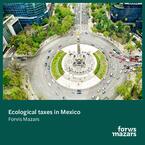Key provisions of the new tax:
- This tax will apply to individuals and legal entities operating fixed sources that generate greenhouse gas emissions into the atmosphere.
- A fixed source is defined as any facility permanently located in a specific place, used for industrial, commercial, service, or any other activities.
- Greenhouse gas emissions are defined as the direct release of carbon dioxide, methane, and nitrous oxide into the atmosphere, either individually or combined. The emissions must amount to or exceed the equivalent of one tonne of carbon dioxide per month.
- The tax will be calculated based on a rate of $58 Mexican pesos per tonne of carbon dioxide emitted, with proportional rates applied to fractions of a tonne.
- Taxpayers must declare and pay the tax within the deadlines and using the procedures established by the relevant authority, no later than the 17th of the following month. This payment will be considered an advance on the annual tax, which must be declared in July of the corresponding fiscal year.
- Additionally, taxpayers must submit proof of registration to the competent authority and maintain a record of their greenhouse gas emissions.
To ensure compliance with these obligations, the relevant authority will issue general rules, which taxpayers are advised to monitor closely upon publication.
It is worth noting that this type of tax is not new to the metropolitan area in Mexico. In 2019, Estado de México introduced a tax on carbon dioxide and other greenhouse gas emissions through the Pollutants Tax Law. This measure also aims to reduce pollution and promote a transition to cleaner technologies.
Our ESG and green tax specialists are available to help your business implement best practices and ensure compliance with this new regulation. Get in touch with us today!
| In Mexico, legislative reforms have been carried out that contemplate new taxes focused on environmental protection. We invite you to consult, at the bottom of this page, the downloadable information table with current data, analysed by our experts up to January 2025, where the corresponding taxes are indicated. |





